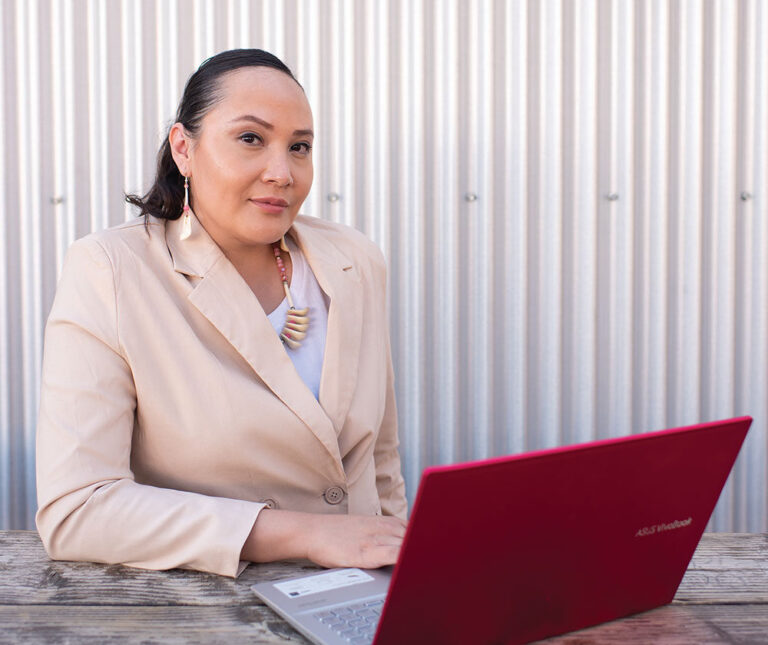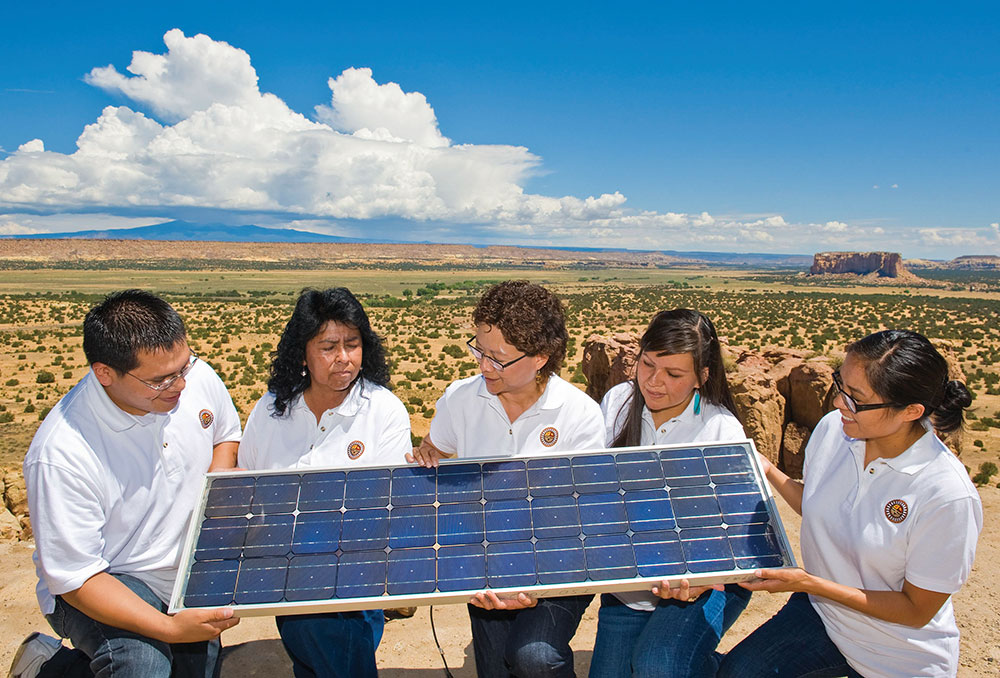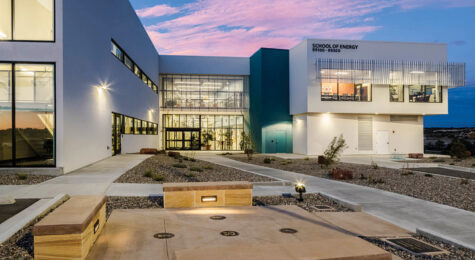Native American Entrepreneurs in New Mexico Find Stellar Support
Goal: Create more economic opportunities for Native American communities.

New Mexico’s Native American population and culture is a key part of the state’s identity. By opening up shop, Native American entrepreneurs are creating more economic opportunities for their own communities, while also encouraging clients and consumers to learn more about their culture.
Artisans at the Indian Pueblo Cultural Center, for instance, seek to provide tangible Pueblo experiences. Then, there’s organizations like Creative Startups, which offers resources and guidance for Native American entrepreneurs.
Indigenous Innovation in New Mexico
Kelly Holmes, CEO and editor-in-chief of Native Max, a digital media company, hosts the Creatives Indigenous Innovation Challenge alongside Creative Startups. The program provides a six-week accelerator program for Native entrepreneurs, artists, innovators and visionaries looking to disrupt the status quo and put Native creativity at the forefront of the business world.
“In the challenge, our participants work together and connect with world-class Native business mentors, collaborate with a cohort of like-minded Native creatives, and engage in an intensive, hands-on business-ed program,” says Brenna Ortiz, program support/ director of Creatives Indigenous.
Holmes says representation is just as important for entrepreneurial support programming as it is in media. The inspiration for her fashion magazine that puts Native designs and culture in the limelight was feeling excluded when she was a model. Holmes says she relied on free resources when she wanted to learn how to build a business, “but I didn’t feel represented because my business idea was so niche. Content centered on Indigenous business owners was hard to find.”
Ortiz says it’s important to support Indigenous entrepreneurs in the creative sector because, oftentimes, there is a lot of cultural appropriation happening.
“With non-Native artists and business owners profiting from a culture that doesn’t belong to them, it not only shows a lack of respect for the community, but it’s also exploitation,” Ortiz says.
“The purpose of Creatives Indigenous is to put Native creators in the limelight and provide an accessible business-ed course to propel them into the business world. Most of our participants have never attended business school, but they leave our program prepared to take their business to the next level.”
Education, Careers & Opportunity
5 Reasons Your Company Should Relocate to New Mexico
Find out why it makes sense to move your business to the Land of Enchantment.
Domino Effect of Inspiration
Tsailii Rogers, a program participant who is Diné (Navajo) and Latina, founded Silent T Productions, a social impact production company.
“The entertainment industry holds immense power in shaping societal perceptions and influencing culture,” Rogers says. “However, despite progress, Indigenous representation is still marred by harmful stereotypes, failing to capture the rich diversity of Natives. The time has come for Indigenous storytellers to reclaim their narratives, ones that resonate with and inspire future generations, fostering positive change.”
Working with Creative Startups, Holmes pays it forward to fellow business owners. “I got to learn more about [Native entrepreneurs’] businesses and guide them, sharing information I wish I had when I was at that stage myself,” she says.
“Together, we can celebrate diversity and embrace stories that honor the beauty and uniqueness of Indigenous cultures.”
Tsailii Rogers, Silent T Productions
Holmes says she worked with Pueblo beadwork artist and Indigenous fashion designer Sage Mountainflower. “She’s talented, but she was hitting roadblocks with launching her brand, and I offered to help her get her name out there,” Holmes says. “We promoted her story and beautiful works. I’m happy to still be working with her.”
Collaborations like this are common.
“Many of our participants work together and build a strong network amongst each other. They exchange ideas, help each other innovate, develop new projects together, and most importantly, create new job opportunities within their communities,” Ortiz says. “There is definitely a domino effect of inspiration within all of our cohorts.”
The support and resources for Native entrepreneurs in New Mexico are vast.
“Other Native organizations are there that support Native entrepreneurs,” says Holmes, who launched her magazine with a fashion show in New Mexico. “It feels comfortable for me to work in New Mexico.”

Powerfully Good
A current program at Sandia National Laboratories in Albuquerque connects American Indian tribal governments in remote regions with viable electricity solutions. At the same time, Sandia is also training a new generation of American Indian college interns to be renewable energy advocates.
“We have offered a Tribal Internship Program since 2002 and welcomed our 50th American Indian intern in 2023,” says Sandra Begay, engineer and principal member of the Sandia National Laboratories technical staff. “I hire interns who are juniors, seniors and college grad students, all of whom have extensive STEM academic backgrounds.”
The object of the Tribal Internship Program is for American Indian interns to join Begay and visit tribal leaders, talking to each leader about growing their individual tribal nation’s renewable energy capacity.
“Many tribes these days are doing an energy transition from coal and mineral-based fossil fuels to renewable clean energy installations, such as solar panels, on their tribal lands,” Begay says. “Students accompany me and learn about the funding, bureaucracy and other real-life hurdles that go into putting renewable energy in Indian country.”
Begay, who is also a member of the Navajo Nation, says during the program’s 21-year history, student interns have been recruited nationally from about 20 different American Indian tribes, and about 67% of the students have been women.
“I’ve kept in touch with many intern students over the years, and several are now working at careers in clean energy,” she says. “One is a professor teaching wind energy at Northern Arizona University, another is a professor at The University of New Mexico working in water resources, and three interns started their own business in Flagstaff manufacturing off-grid solar units. It’s great to see so many of them doing so well.”
– Staff Writer Kevin Litwin contributed to this article.
Get to Know New Mexico
Want to learn more about living and working in New Mexico? Check out the latest edition of Livability New Mexico Economic Development.



